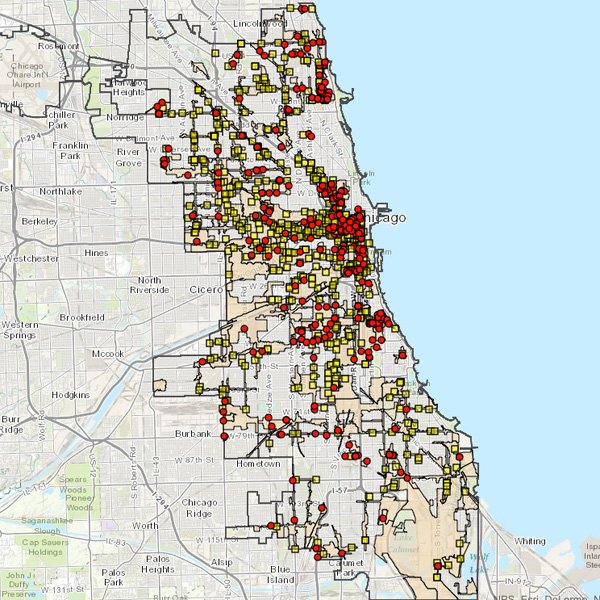Since TIFs—tax increment finance districts—come up whenever school finances are discussed (in this case 2,000 CPS employees, half of whom are teachers), it's convenient that, on the day of the CPS announcement, the city also launced a new TIF portal that maps the city's TIF districts and what the city does with them. What used to take my former colleagues at the Reader numerous FOIA requests and much analysis can now be done at a glance:
Alderman Bernard Stone (50th) argued that TIF funds pay for community improvements that in turn generate more taxes that can be used to make the community still better. "We invest taxes to improve our communities, our local communities," he said. "That is a TIF. It's a tool. It's not something you put in your budget."
But Stone and the administration are ignoring two key issues: the program's lack of transparency and its severe inequities. By keeping the TIF budget secret, the administration was able to conceal the fact that the program actually produces far more money for capital projects in the Loop and surrounding neighborhoods than it does in the outlying wards.
Thanks in large part to the attention brought to the subject by Mick Dumke and Ben Joravsky, as well as pols and bureaucrats sympathetic to their criticism, you can see how those capital projects are distributed. Yellow represents infrastructure projects; red represents redevelopment. Obviously, TIF development of both kinds is concentrated in the central city, from the prominent (the renovation of 400-450k square feet of office and lobby spae for the headquarters of United Airlines) to the picayune (49k of office space for EthnicGrocer.com, which downsized to Hubbard Street shortly thereafter).

Check the full-blown TIF portal for more.



